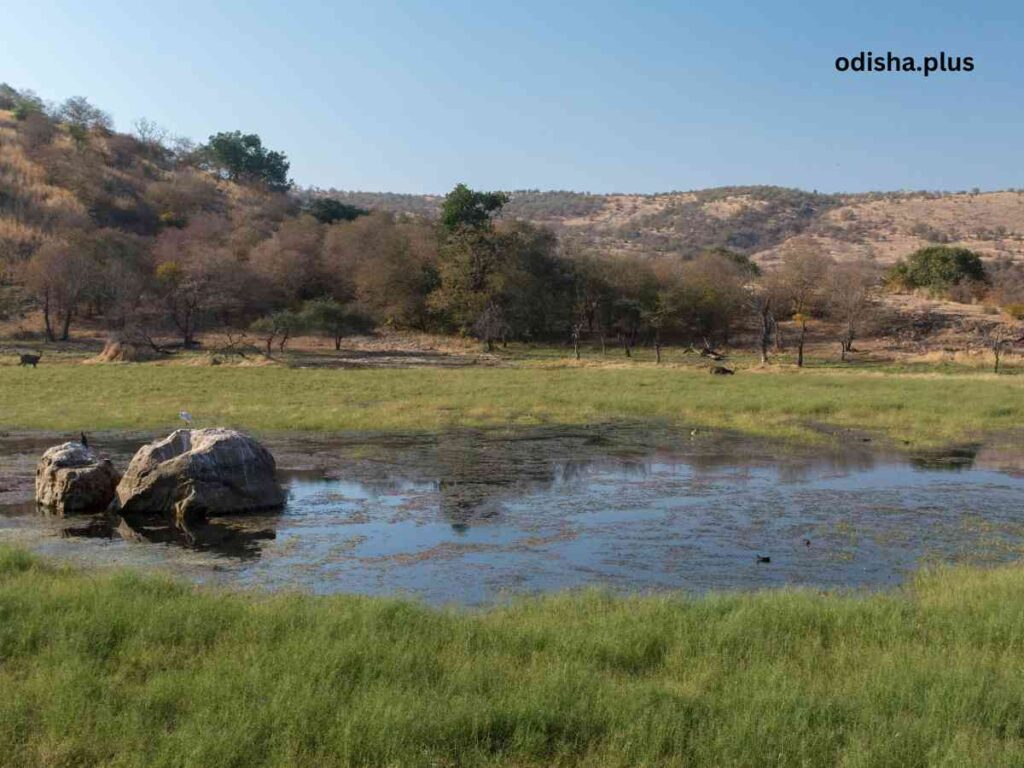Common Property Resources are those that are accessible to multiple users but are not owned by any single individual or entity
Dr. Karim Mohamed Farag Shehata & Dr. Navya Gubbi Sateeshchandra

In an era marked by increasing environmental challenges, the concept of green management has gained significant prominence. Organizations worldwide are recognizing the imperative of adopting sustainable practices to mitigate climate change, conserve resources and protect biodiversity. Central to this paradigm shift is the understanding and effective management of common property resources (CPRs).
These resources, which are neither privately owned nor publicly controlled, have historically been a source of conflict and overexploitation. However, Elinor Ostrom’s groundbreaking work has demonstrated that CPRs can be sustainably managed through collaborative governance. This article explores the intersection of green management and CPRs, examining the challenges and opportunities associated with their sustainable stewardship.
Understanding Common Property Resources
Common property resources are those that are accessible to multiple users but are not owned by any single individual or entity. Examples include forests, fisheries, water bodies and grazing lands. These resources are often characterized by their open-access nature, which can lead to overuse and degradation. The tragedy of the commons, a concept popularized by Garrett Hardin, illustrates this phenomenon. Hardin argued that individuals acting in their own self-interest would inevitably deplete common resources, leading to a collective tragedy. However, Elinor Ostrom’s research challenged this pessimistic view.
Elinor Ostrom has made her analysis of economic governance especially the commons. Her research lens consists of the framework within institutions like appropriation and provision, collective choice arrangement, effective monitoring, scale of sanctions, mechanism of conflict resolution, self-determination and organization of multiple layers and so on. She was the first woman to be awarded Nobel Prize in Economics. Her seminal works throws light on her concern towards common property resources. She suggests for the appropriate institutional arrangements to protect the resources. The principle of Elinor is more connecting with settling disputes for distribution. Elinor Ostrom stresses on institutional growth.
The dynamics of institutions in decision making policies and functioning is to create value for the group, society or people at large. Institutions must emerge because problems will emerge. Problems cannot be foreseen. When problems emerge & reach a stage where no one can solve then institutions will solve it. CPR is one of the areas in which she has concentrated upon. The way of Management of CPR can also apply to the way of management of an organisation with definite vision, mission and goals.
This can be solved through leadership, with people and with resources. All that happens as a part of organisational setting. Elinor Ostrom opines that problems that cannot not solved by individuals, society or business organisation can be solved by institutions. So, institutional growth should be well planned. Institutions should be based on principles. They should always adopt societal rules and economics.
According to Elinor Ostrom, a few terms hold a significant importance with respect to especially common property resources, buildings, technology and service. Through extensive empirical studies, Ostrom identified several conditions that enable communities to sustainably manage CPRs. These conditions include clearly defined property rights, rules and regulations that are tailored to the specific context of the resource, a system for monitoring and enforcing rules, a mechanism for resolving conflicts and a sense of trust and cooperation among community members.
Green Management and CPRs: A Symbiotic Relationship
Green management and CPRs are intrinsically linked. Sustainable practices are essential for preserving CPRs and ensuring their continued availability for future generations. Conversely, effective management of CPRs can contribute to broader environmental goals, such as climate change mitigation and biodiversity conservation.
Challenges and Opportunities
The sustainable management of CPRs in the context of green management presents several challenges and opportunities:
- Balancing Economic Interests and Environmental Concerns: One of the primary challenges is balancing the economic interests of individuals and communities who rely on CPRs with the need to protect these resources for the long term. Green management strategies must seek to find sustainable solutions that meet the needs of both people and the environment.
- Institutional Arrangements: Establishing effective institutional arrangements for managing CPRs is crucial. These arrangements should be participatory, inclusive and accountable to the community. They should also be adaptable to changing circumstances, such as climate change and technological advancements.
- Knowledge and Capacity Building: Building the knowledge and capacity of communities to manage CPRs sustainably is essential. This includes providing training on environmental management techniques, promoting awareness of the importance of conservation, and supporting local initiatives.
- Technology and Innovation: Technology can play a valuable role in supporting the sustainable management of CPRs. For example, remote sensing and Geographic Information Systems (GIS) can be used to monitor resource use and identify areas of degradation. Innovative approaches to resource management, such as ecosystem-based management, can also contribute to sustainability.
- Governance and Accountability: Effective governance is essential for ensuring that CPRs are managed in a fair and equitable manner. Accountability mechanisms should be in place to hold individuals and institutions responsible for their actions.
Case Studies
To illustrate the principles of green management and CPRs, let’s consider a few case studies:
Community-Managed Fisheries: In many parts of the world, communities have successfully managed fisheries through collaborative governance. By implementing fishing quotas, monitoring catch levels and enforcing regulations, these communities have been able to maintain sustainable fish populations.
Forest Stewardship Councils (FSC): The FSC is a global non-profit organization that promotes responsible forest management. By certifying forests that meet a set of environmental and social standards, the FSC helps to ensure that timber products are sourced from sustainably managed forests.
Water User Associations: In many regions, water user associations have been established to manage shared water resources. These associations develop rules and regulations for water use, allocate water among different users and monitor water quality.
The Future of Green Management and CPRs
The future of green management and CPRs is intertwined with the broader challenges and opportunities facing humanity. As climate change continues to intensify and resource scarcity becomes more acute, the importance of sustainable practices and effective CPR management will only grow. By understanding the principles of CPR governance and applying them to specific contexts, we can ensure a sustainable future for both people and the planet.
The sustainable management of common property resources is a critical component of green management. By understanding the principles of CPR governance and applying them to specific contexts, it is possible to achieve a balance between economic development and environmental protection. Elinor Ostrom’s work has provided valuable insights into the conditions that enable communities to successfully manage CPRs. Through the application of these principles and the adoption of innovative solutions, safeguarding our planet and ensuring a prosperous future for humanity.
(Dr. Karim & Dr. Navya are professors at Berlin School of Business & Innovation, Berlin, Germany. Views expressed are personal)




























